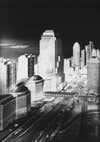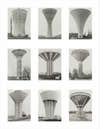‘Photography Reinvented’ at the National Gallery of Art in Washington, D.C.
A museum show features a refreshingly diverse group of photographers
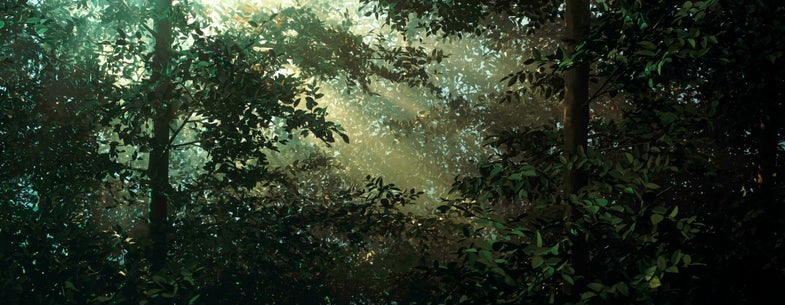

The renovated East Building of Washington, D.C.’s National Gallery of Art (NGA) is spectacular. Closed for three years, the famous I.M. Pei-designed museum reopened its doors this fall, expanded by an additional 12,250 square feet of gallery space, much of it below street level; two towers connected by a rooftop terrace crown the soaring design. All the old favorites are on view, as well as a temporary exhibition devoted to the recent acquisition of 35 monumental photographs, Photography Reinvented: The Collection of Robert E. Meyerhoff and Rheda Becker.
The revelatory show brings the NGA’s holdings into the 21st century with massive, wall-length photographs by Candida Höfer, Anselm Kiefer, Marina Abramović, Catherine Opie, and Hiroshi Sugimoto, among others. “The Meyerhoff-Becker gift has really helped to expand our collection enormously with major pieces,” curator Sarah Greenough says.

Meyerhoff has long been a supporter of the museum, having also given an outstanding collection of more than 300 post-war paintings with his first wife, Jane. When the widowed philanthropist met Rheda Becker, they connected largely through their love of art and music. Meyerhoff was in his 80s at the time. “It’s extraordinary that they decided to start this collection at this stage of their lives,” Greenough says.
Most collectors talk about one piece that gave them the bug, a work they had to have. When Becker and Meyerhoff discovered their mutual love for German photographer Thomas Struth’s “Alte Pinakothek, Self-Portrait, Munich” (2000), the idea for the collection was born.

In the picture, Struth stands with his back to the camera, cut off, out of focus, with his hand jammed into his pocket, gazing at the infamous self-portrait of Albrecht Dürer (1500). Dürer is perhaps the best-known of German Renaissance painters, and Struth’s life-size photo of himself regarding the painting links the two artists across the centuries. The painting is presented in revered precision—even the wear to the frame visible—while the photographer’s presence seems haphazard and fleeting.
Several other works by Struth present magical moments of figure groupings gathered in front of famous pictures. Perhaps most charming is a group of schoolgirls viewing “Las Meninas” (1656), a panoramic painting by Diego Velázquez of young Spanish royalty, in the Museo del Prado in Madrid. Greenough calls the series “a perfect body of work” that can speak to viewers about their experience with masterworks in the National Gallery.

The first work visitors to the exhibition see is a chromogenic print of “Clearing” from 2003 by another German, Thomas Demand. The photograph measures more than six feet long and seemingly depicts a gentle forest scene. Upon closer inspection, however, the viewer realizes that this scene has been carefully constructed: Every leaf, every branch is made of paper with an electric light sources shining through the “trees.” Demand crafts his sculptural sets meticulously by hand, then photographs them. Greenough loves to see viewers’ reaction to the work. “It seduces you at first with its apparent reality, and when you get close it surprises you with the artificially,” she says. “It turns your expectation on its head.”

A striking aspect of Photography Reinvented (a rather stale title to those familiar with contemporary art) is the diversity of artists represented in the show. It’s a refreshing palette cleanser after the chronological, canonical march of paintings and sculptures by overwhelmingly white male artists in the rest of the museum. Included in the collection are two pieces by American photographer Cindy Sherman, famous for her Film Stills series from the 1970s. One of these is represented in the collection, along with a later work, “Untitled #211,” from 1989. In the brightly colored, circular chromogenic print, Sherman uses her own face and body to reference a 15th-century Italian portrait of a duke and his duchess. Known for her work with costumes and stage makeup, Sherman is seen in profile, and an obviously fake nose and set of false pearls exaggerate the features of the original, a blue satin background replacing the expanse of flatlands and sky of the painting.
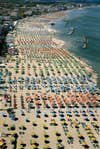
Vik Muniz, an American born in Brazil, repurposes a 1957 portrait by celebrity photographer Richard Avedon in which Marylin Monroe looks glamorous as always but also vulnerable and introspective, even sad. For the 2007 piece, Muniz has broken up the star’s image, literally, into puzzle pieces, layering them over the original in a way that allows the viewer to recognize the Avedon (displayed next to it in the exhibition). But it takes that introspective look on the actress’s face a step further, reminding us that she was a complex, enigmatic human being, one who was troubled and ultimately broken.
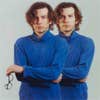
Passing through the galleries of Photography Reinvented, one ultimately realizes what all these works have in common. These artists shine a spotlight on artifice, conscious of their medium and the myth that photographs are documents of truth. Each artist, in his or her own way, also acknowledges the history of art and the long line of art-makers who came before them.
The exhibition Photography Reinvented: The Collection of Robert E. Meyerhoff and Rheda Becker is on view at the National Gallery of Art in Washington, D.C., through March 5, 2017.
